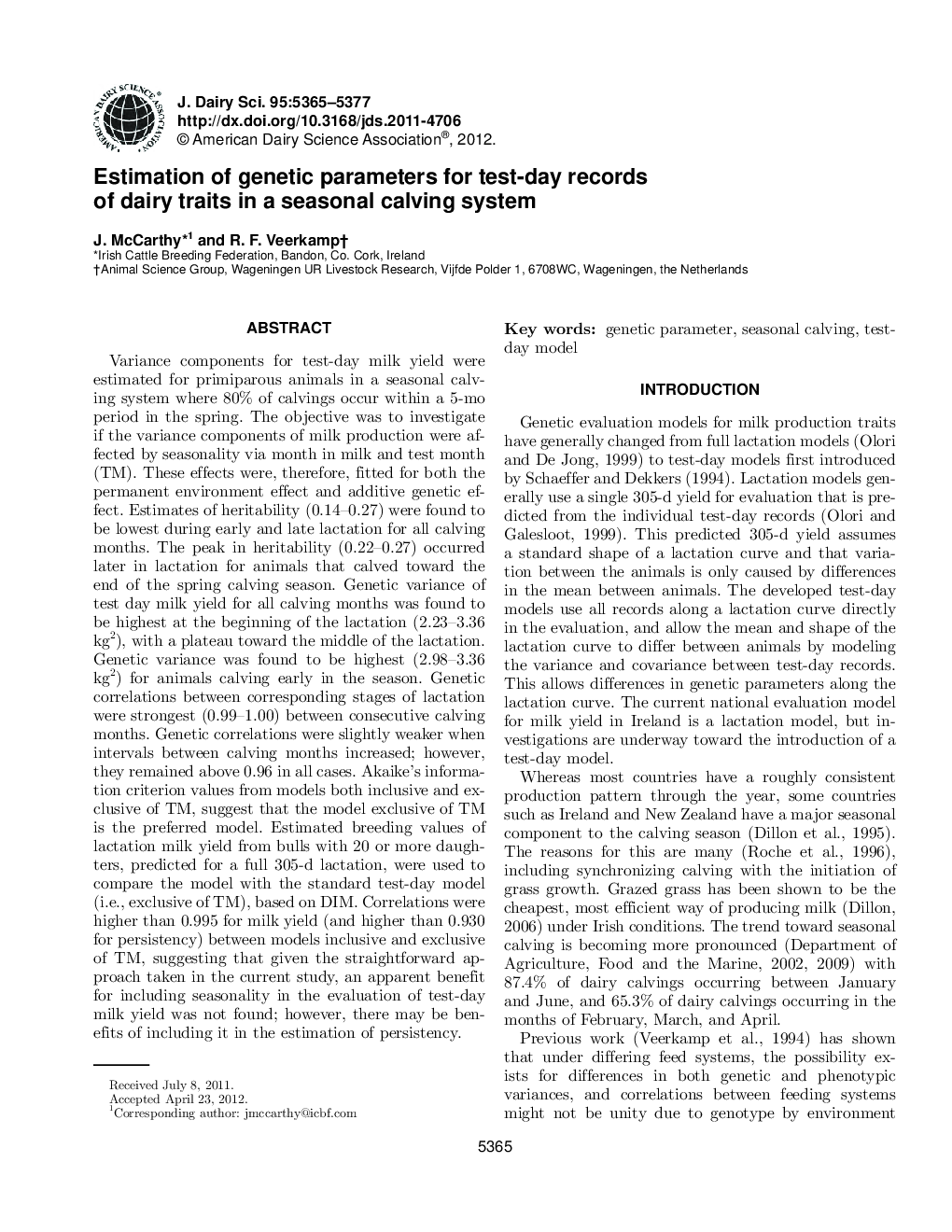| Article ID | Journal | Published Year | Pages | File Type |
|---|---|---|---|---|
| 10976863 | Journal of Dairy Science | 2012 | 13 Pages |
Abstract
Variance components for test-day milk yield were estimated for primiparous animals in a seasonal calving system where 80% of calvings occur within a 5-mo period in the spring. The objective was to investigate if the variance components of milk production were affected by seasonality via month in milk and test month (TM). These effects were, therefore, fitted for both the permanent environment effect and additive genetic effect. Estimates of heritability (0.14-0.27) were found to be lowest during early and late lactation for all calving months. The peak in heritability (0.22-0.27) occurred later in lactation for animals that calved toward the end of the spring calving season. Genetic variance of test day milk yield for all calving months was found to be highest at the beginning of the lactation (2.23-3.36Â kg2), with a plateau toward the middle of the lactation. Genetic variance was found to be highest (2.98-3.36Â kg2) for animals calving early in the season. Genetic correlations between corresponding stages of lactation were strongest (0.99-1.00) between consecutive calving months. Genetic correlations were slightly weaker when intervals between calving months increased; however, they remained above 0.96 in all cases. Akaike's information criterion values from models both inclusive and exclusive of TM, suggest that the model exclusive of TM is the preferred model. Estimated breeding values of lactation milk yield from bulls with 20 or more daughters, predicted for a full 305-d lactation, were used to compare the model with the standard test-day model (i.e., exclusive of TM), based on DIM. Correlations were higher than 0.995 for milk yield (and higher than 0.930 for persistency) between models inclusive and exclusive of TM, suggesting that given the straightforward approach taken in the current study, an apparent benefit for including seasonality in the evaluation of test-day milk yield was not found; however, there may be benefits of including it in the estimation of persistency.
Related Topics
Life Sciences
Agricultural and Biological Sciences
Animal Science and Zoology
Authors
J. McCarthy, R.F. Veerkamp,
